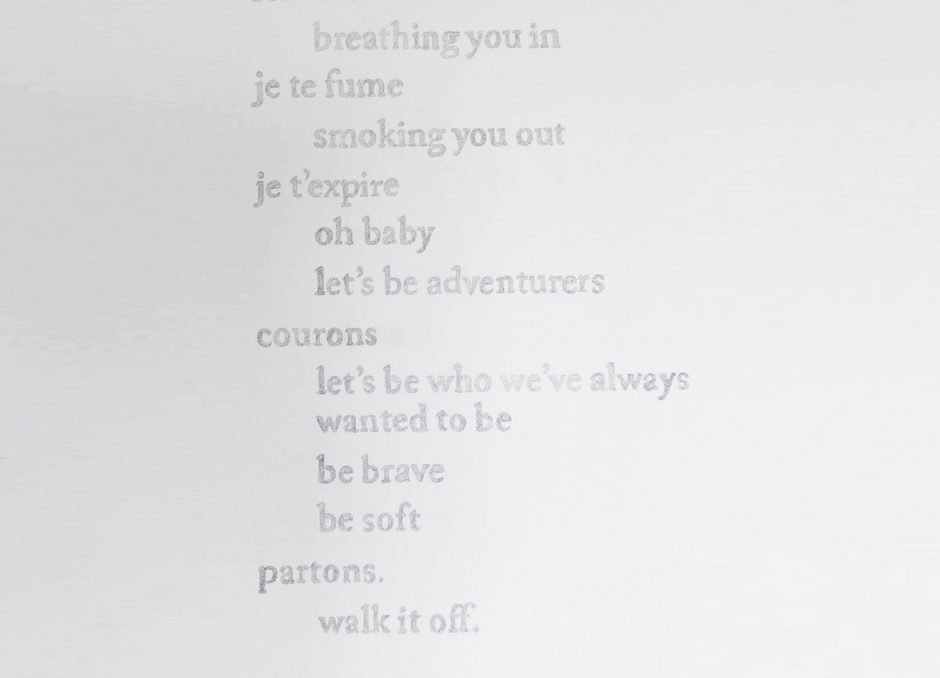Implicit dualities, hers, mine, yours. A text that can be read alternating languages; we may also choose to read only one. Autonomous or in pairs, the idioms make sense. English, the mother tongue, French, the father tongue. Their empty spaces and the interval. Navigate through it, settle down for a bit.
Then talk about her, the other, Prune, you, you.

[…] When the spectator enters the exhibition, he finds himself standing in front of a rail that hides part of the space, on which Carole Levy reproduced, with the help of a pencil, a text where English and French sentences intertwine. Comprehensible in each language separately, it can also be understood when passing from one language to another. Being bilingual, she draws on the gaps and spaces between languages in order to propose a reflection on otherness. This poetic form, placed somewhere between autobiographic fragments and fiction, questions individual memory and experience. Through drawing and writing, she explores lost moments, absence and what was left unsaid. Highlighted in this manner and somehow superseding the usual statement, her proposition resonates within the spectators’ minds, and some of her verses seem to announce what is to come: “Let’s be adventurers/ Courons/
Let’s be who we’ve always wanted to be/
Be brave/ Be soft.”
[…] When they leave, spectators might turn around one last time to read Carole Levy’s words and reassess them, considering the life that awaits those young graduates:
“Let’s be adventurers/ Let’s be who we’ve always wanted to be.”— Raphaël Brunel,
Curator of the exhibition A suivre…2014
Pencil, variable sizes and mediums

